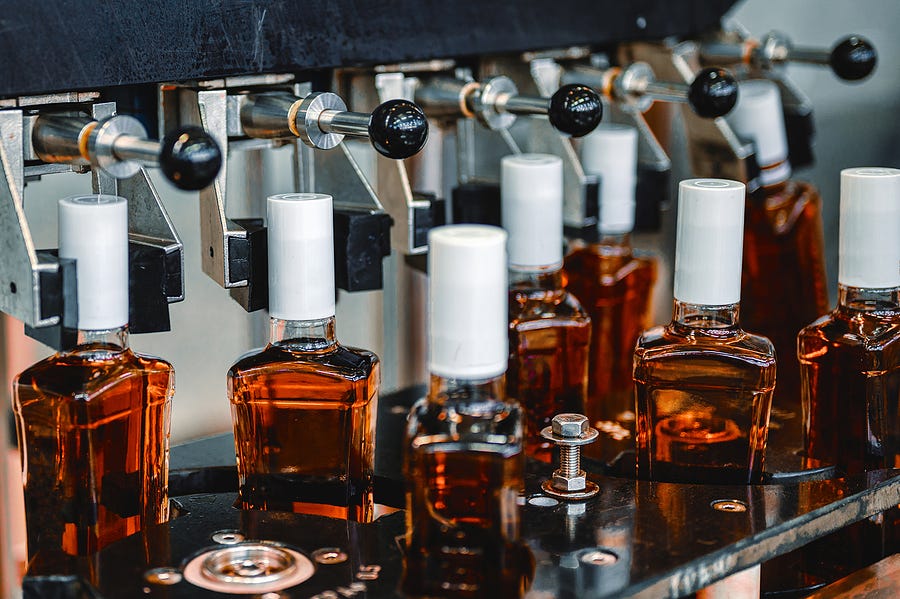How Product Recall Insurance Works for Food Fraud Events (with 3 Case Studies)
Supplement for paying subscribers
Contents
An Introduction to Food Product Insurance
Does Product Insurance Get Activated in a Food Fraud Event?
Case Studies: Product Insurance Considerations in Three Food Fraud Events
Recovering Losses From Suppliers
Takeaways for Food Professionals
Sources
An Introduction to Food Product Insurance
Product recall insurance, also known as food product insurance, product contamination insurance and product liability insurance, is designed to assist food manufacturers with the costs associated with recalling a product from the market.
Recall costs, replacement costs, consultancy costs, losses from business interruption, third-party financial losses and rehabilitation costs are usually included. Insurance does not cover costs arising from litigation, civil lawsuits (being sued), or punitive damages.
Four areas of coverage
Food product insurance has four areas of coverage, which are described below.
1. Accidental contamination. This covers incidents caused by unintentional error(s) in the manufacturing process that could lead to bodily injury or property damage. For example, contamination with Salmonella or metal fragments or errors in allergen labelling.
2. Malicious product tampering. This is the intentional adulteration of a product that renders it unfit for consumption and is intended to cause harm to the insured or consumers. For example, disgruntled employees putting foreign objects in food, or people adding dangerous items to fruit in retail stores.
3. Adverse publicity. This is the perception that an accidental contamination event has caused bodily injury, even if the event did not occur. For example, if a baby food brand was accused widely in the media of having glass fragments in its products, leading to a recall, but the claims were never substantiated, the company would not be covered for accidental contamination but would be covered under adverse publicity.
4. Government recall. This cover is triggered when a government food safety authority mandates a recall, whether or not due to a contamination event. The policy is triggered by the recall itself, there is no burden of proof on the insured to prove that the product was unsafe, and no contamination is necessary. Some policies also cover facility shutdowns or suspension of operations due to enforcement actions.
Premiums and bursaries
Insurance premium prices are based on the insured’s systems for mitigating risks. Some insurers may provide assistance with risk mitigation in the form of bursaries.
Pre-incident bursaries provide third-party consultants for reviewing and improving food businesses’ quality and safety processes, updating recall plans, designing supplier approvals processes and reviewing contracts with suppliers and customers. Post-incident consultations may also be provided by insurers.
Does Product Insurance Get Activated in a Food Fraud Event?
When something goes wrong and the insured food business needs to make a claim against their product insurance policy this is known in the insurance industry as “triggering the coverage”.
For an event to trigger coverage, the food business must usually show that the product poses a direct health or safety threat to consumers.
In this context, food fraud incidents are not covered by standard food product insurance except if there is a direct threat to consumers. When there is a threat, a recall or market withdrawal would usually be triggered and in that case, the business would typically be covered.
Some policies may cover losses incurred by adverse publicity arising from food fraud, but only cases where the food fraud was linked to widespread allegations of safety problems with the affected food in the media. Few insurers cover counterfeit-type food fraud.
Health threats to consumers from long-term (‘chronic’) toxicity are usually not covered, due to the difficulty of obtaining evidence linking a food to long-term health outcomes. In addition, many policies exclude health effects from carcinogens, such as Sudan dyes - adulterants commonly found in fraud-affected paprika and chilli powder.
Although many insurers provide coverage for malicious product tampering events, some policies specifically exclude contamination from tampering conducted for economic gain, that is, food fraud.
Fraud-affected ingredients are known as “intentionally impaired” ingredients and incidents caused by such ingredients are excluded from some policies. However, it’s important to note that every policy is different. Some insurers offer policy extensions for economic adulteration triggers and some even include it in their standard policy wording.
Case Studies: Product Insurance Considerations in Three Food Fraud Events
Case 1: The Horsemeat ‘Scandal’ of 2013
The horsemeat scandal, in which hundreds of food products made with ‘beef’ were found to contain horsemeat was a major food fraud event which nevertheless caused no illnesses or injuries.
In the United Kingdom, statements by the UK’s Food Standards Agency (FSA) and the UK Chief Medical Officer about the “very low risk” the situation posed to human health made it impossible for food companies to claim against production contamination insurance policies, which only cover events that pose a health risk.
Adverse publicity could also have triggered insurance payouts, but only if media outlets had alleged that consumers were at serious risk of injury or illness.
Case 2: Tuna Adulterated With Nitrites
Low-quality tuna can be treated with chemicals including nitrites to improve its appearance and apparent freshness. Such treatments are not authorised, are conducted to mislead purchasers and are perpetrated for economic gain, making them food fraud events.
Tuna treated in such a way can contain high levels of histamine which presents serious health risks to consumers. Treatment with nitrites also creates carcinogenic nitrosamines in tuna.
Tuna adulteration with nitrites occurs relatively often. European authorities warned that up to 5 million tuna portions were illegally treated with nitrites each week in 2016. In 2017, a production facility in Spain was found to have added undeclared vegetable extracts containing nitrites to tuna to impart a 'fresh' colour. Widespread fraudulent adulteration with nitrites and carbon monoxide was uncovered across the European 'fresh' tuna industry in Europol’s Operation Opson VII in 2018. A Belgium survey of tuna in 2021 discovered tonnes of tuna treated with nitrites and other adulterants. Tuna from Spain was found to contain unauthorised nitrates and nitrites as well as ascorbic acid above legal limits in Italy in 2023.
When it comes to insurance, if a business unknowingly sold tuna treated with nitrites, and they could provide evidence that their product would or did cause bodily harm from the presence of histamine, they would be covered under their product contamination insurance. However, if only nitrosamines were present, without histamine, the event might not be covered because of carcinogen exclusions.
Case 3: Melamine in Milk Scandal (2008)
Insurance market losses were realised in the wake of the melamine-in-milk scandal in China in 2008. Multiple food companies were affected and claimed against their policies.
The costs of the recall(s) and loss of brand value for just one Chinese brand, Sanlu, were estimated at US$87 million. Because there were clear and obvious health consequences from the contamination of the milk, product contamination insurance would have covered these costs.
Recovering Losses From Suppliers
A viable alternative to insurance?
Many food businesses rely on ‘letters of guarantee’ from their suppliers and believe they will be able to recover losses from the supplier if an ingredient or material causes a food safety incident. However, that is not good practice, says Jon Atkinson, Lead Underwriter, Crisis Management, IQUW.
You should never rely on a supplier to indemnify you for any loss says Atkinson, because they may not have the financial resources to do so, or may not agree that they were at fault, or their liability may be limited by contract terms, so they may only be obliged to cover part of your losses, even if it was caused by them.
“[You should never rely on suppliers to indemnify you for losses caused by their ingredients or products, because] One, they [the supplier] may not be able to, they may have a long list of people they owe money to, because they have not only produced [the problematic material] for you but they’ve produced it for others, so they can’t [afford to pay]; Two, maybe they won’t because they don’t believe they’re at fault, and; Three, their liability may be capped in the terms of the contract, so their liability may only be a million, but actually, they’ve caused a loss to you of $10 million [and] then you’re going to have to cover the other nine million [in costs].” Jon Atkinson Lead Underwriter, Crisis Management, IQUW in The London Insurance Market’s Guide to Product Recall Insurance (broadcast)
Takeaways for Food Professionals
Unless a food fraud incident has caused or would cause bodily injury; or triggered a government-mandated recall; or resulted in a widely perceived risk to public health it most likely will not be covered by product insurance.
The policy wording of product insurance varies widely. Food-fraud-relevant exclusions include contamination events arising from “intentionally impaired” (fraud-affected) ingredients or carcinogens.
Some insurers will offer extensions for economically-motivated (food fraud) adulteration events, or even include such events in their standard policies, so it pays to check policy documents carefully to understand coverage.
Suppliers may not be willing, able, or contractually bound to indemnify or compensate your business if your business suffers losses from a food-fraud-affected ingredient supplied by them.
Sources
Anon (2024). Combating fraud in the global food supply chain. [online] Available at: https://global.lockton.com/gb/en/news-insights/whitepaper-report-combating-fraud-in-the-global-food-supply-chain [Accessed 20 May 2024].
London Insurance Market. (2023). The London Insurance Market’s Guide to Product Recall Insurance. [online] Available at: https://thelondoninsurancemarket.com/broadcasts/the-london-insurance-markets-guide-to-product-recall-insurance/ [Accessed 20 May 2024].
Evershed 2024-02-19T08:00:00+00:00, T. (n.d.). Product recall insurance increasingly relevant as threat grows. [online] Insurance Times. Available at: https://www.insurancetimes.co.uk/analysis/product-recall-insurance-increasingly-relevant-as-threat-grows/1451183.article [Accessed 20 May 2024].





